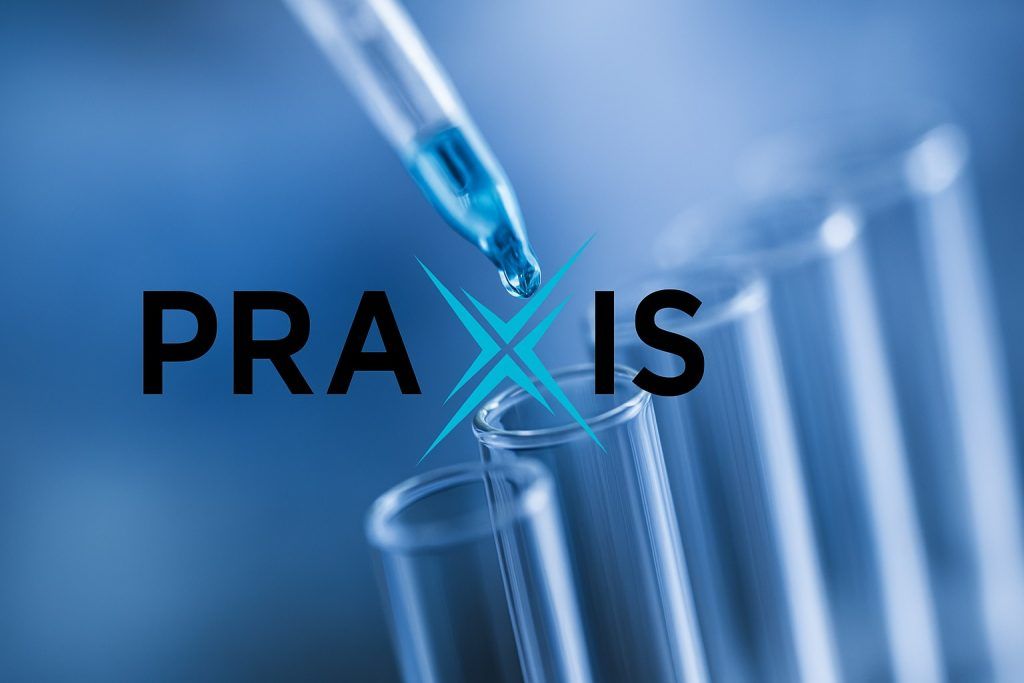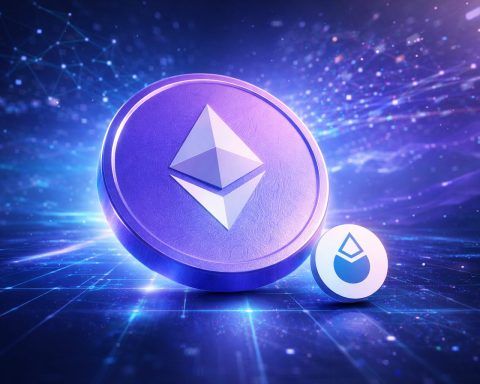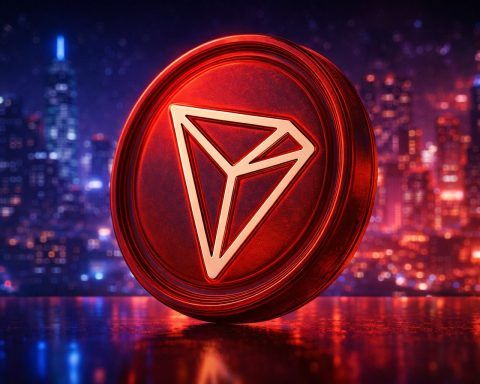- Ethereum adds ~16K devs in 2025: Over 16,000 new developers joined the Ethereum ecosystem between January and September 2025 – cementing Ethereum’s status as the largest blockchain developer community [1]. Ethereum now has around 31,869 active developers, nearly double the next closest network [2].
- Solana’s developer count jumps 83%:Solana attracted about 11,500+ new developers in the same period [3], an ~83% year-over-year surge in its developer base. Solana’s 17,708 active devs rank it second only to Ethereum, reflecting its growing appeal for building DeFi apps, games and consumer dApps [4] [5].
- Bitcoin & others see growth:Bitcoin counted roughly 7,500 new developers in 2025 (third-most) and about 11,000 active devs overall [6]. This hints at rising developer interest in Bitcoin’s ecosystem (e.g. Ordinals NFTs and Lightning Network apps) despite its focus on sound money [7]. Other chains like Polygon, Sui, BNB Chain, and Polkadot also have steady developer activity, underscoring a diversifying multi-chain landscape [8].
- Nigeria emerges as a Web3 dev hub:Nigeria now accounts for ~3.8% of global Web3 developers (over half of Africa’s Web3 devs) [9]. That marks a meteoric rise from virtually zero in 2015 to one of the top sources of new blockchain developers in 2025 [10]. Asia leads regional growth with 43.5% of new developers and ~33% of the total Web3 developer pool [11], while Africa’s share stands at 6.6% [12].
- Ethereum’s dominance vs. challengers: Ethereum still dominates decentralized finance (DeFi), hosting ~67.5% of all value locked in DeFi protocols, far ahead of Solana’s ~8.7% share [13]. This highlights Ethereum’s entrenched position as the “world’s computer” powering DeFi, NFTs, and more [14]. However, Solana’s rapid developer influx and technical advantages (high speed, low fees) make it an increasingly credible challenger in the coming years [15].
Ethereum Extends Its Lead in Developer Numbers
Ethereum has solidified its lead as the world’s largest blockchain developer ecosystem in 2025. An analysis of open-source contributions (by Electric Capital and the Ethereum Foundation) found 16,181 new developers joined Ethereum from January through September – the most of any network [16]. This brings Ethereum’s active developer count to roughly 31,869, far outpacing every other blockchain [17]. Together, Ethereum and second-place Solana now make up nearly half of all blockchain developers worldwide [18]. Ethereum’s sizable developer community reflects its broad adoption and maturity: the platform underpins everything from decentralized finance to NFTs, earning nicknames like the “world’s computer” and even “Wall Street’s token” in financial circles [19]. The Ethereum Foundation highlighted its community’s growth, noting that “by a wide margin, developers new to crypto prefer the Ethereum ecosystem,” thanks to its strong support, documentation and tooling [20]. The foundation even publicly thanked everyone building on Ethereum for making it the “#1 developer platform in crypto” [21].
Notably, Ethereum’s developer count includes activity across its Layer-1 and Layer-2 networks (like Arbitrum, Optimism, etc.), with contributors de-duplicated so individuals aren’t double-counted [22]. This comprehensive view underscores Ethereum’s depth: its pool of developers is almost twice as large as Solana’s and nearly three times that of Bitcoin’s [23]. Such a massive dev base gives Ethereum a powerful network effect – so many developers, users, and assets reside on Ethereum that it creates a moat that’s hard for rivals to overcome. As of late 2025, despite rising competition, Ethereum remains the leading platform for smart contracts and dApps, a status its developer army helps to maintain.
Solana’s Developer Boom Closes the Gap
Riding a wave of momentum, Solana has firmly established itself as the #2 hub for blockchain developers. Solana saw about 11,534 new developers join its ecosystem in 2025 (through Q3) [24] – a remarkable expansion that translates to roughly 83% year-over-year growth in its dev community [25]. This brings Solana’s active developer count to around 17,708 (second only to Ethereum) [26]. Analysts note that Solana’s ability to attract talent stems from its high-performance tech (fast transactions, low costs) and growing opportunities in areas like DeFi, gaming, and NFTs [27]. Many new projects and startups are choosing Solana for its throughput advantages, which has fueled a surge in developer interest.
While still about half the size of Ethereum’s dev base, Solana’s growth is outpacing Ethereum’s in percentage terms. Over the past year, full-time developers on Solana jumped ~29%, versus around 6% growth for Ethereum’s full-time devs, according to Electric Capital’s tracker [28]. This rapid rise underscores Solana’s emergence as a real challenger. “Solana’s expanding footprint signals a maturing and increasingly credible challenger” to Ethereum’s dominance, one report noted [29]. In fact, Solana and Ethereum’s trajectories appear closely linked – their market prices have shown a 0.96 correlation recently, meaning investors often trade them in tandem as premier smart contract platforms [30]. At the time of reporting, Ether (ETH) trades around $3,950, while Solana (SOL) hovers near $196, with both tokens seeing similar pullbacks of a few percent amid broader market choppiness [31]. The near-parallel price moves suggest that markets view ETH and SOL as co-leaders of the crypto sector, further highlighting how Solana is increasingly mentioned in the same breath as Ethereum [32].
It’s worth noting there is some debate about the exact developer numbers. The Solana Foundation’s developer relations head has argued that Electric Capital’s methodology undercounts Solana’s devs by roughly 7,800, and has encouraged Solana developers to register their GitHub repositories to improve tracking [33]. Some observers also caution that the “new developer” figures might be inflated by one-off hackathon projects or AI-generated code that doesn’t stick around long term [34]. Still, even if the precise figures are debated, the overarching trend is clear: Solana’s developer community is growing rapidly and closing the gap with Ethereum, solidifying Solana’s status as the leading alternative blockchain ecosystem going into 2026.
Bitcoin and Other Blockchains: Steady Developer Interest
Behind Ethereum and Solana, Bitcoin holds the third-largest developer community in crypto. Roughly 7,494 new developers started contributing to Bitcoin’s code in 2025, bringing its total active dev count to about 11,036 [35]. This is striking given Bitcoin’s primary reputation as “digital gold” rather than a programmable platform. The interest is partly driven by new innovations on Bitcoin: developers have been exploring Layer-2 solutions (like the Lightning Network for faster payments) and even novel use cases like Ordinals (NFTs on Bitcoin), expanding Bitcoin’s appeal beyond just a store of value [36]. By welcoming thousands of new contributors, Bitcoin’s open-source project shows it’s very much alive in development – a sign that builders see opportunity to extend Bitcoin’s utility without altering its core protocol.
Beyond the big three, several other blockchain ecosystems are cultivating their own developer bases. Platforms like Polygon, Sui, BNB Chain, and Polkadot each rank among the top in active developers, indicating healthy multi-chain growth [37] [38]. These networks often focus on specific niches or use cases – for example, Polygon leverages Ethereum’s security but offers faster/cheaper transactions, while Polkadot enables cross-chain interoperability. The Electric Capital data shows these ecosystems “recorded steady developer engagement this year” [39], even if their absolute numbers are smaller. This points to an increasingly diverse Web3 landscape where no single chain has a monopoly on innovation. However, the data also suggests an ongoing concentration of talent in the top two networks: Ethereum and Solana together now account for almost 50% of all active blockchain developers worldwide [40]. In other words, while alternative chains are growing, developer talent is still gravitating disproportionately to the leading platforms.
Global Trends: Nigeria and Emerging Developer Hubs
One of the most remarkable trends in the crypto developer ecosystem is its globalization. In particular, Nigeria has surged into the spotlight as a major source of Web3 talent. According to Electric Capital’s latest report, Nigeria now accounts for roughly 3.8% of all Web3 developers globally [41]. To put that in perspective, Nigeria alone makes up more than half of all the blockchain developers in Africa (the continent’s total share is about 6.6%) [42]. This represents a stunning leap for Nigeria – just a decade ago in 2015, the country had virtually no presence in the crypto developer scene [43]. By 2025, Nigeria’s share of the world’s Web3 developers has grown 1,400% over the past ten years [44], the largest increase of any country. It now stands on par with much larger economies in terms of developer count. In fact, Nigeria’s developer pool is comparable in size to those of the UK, Germany, China, and Canada, even surpassing countries like France, Brazil, and Spain in total blockchain developers [45]. This explosion of talent highlights Nigeria’s outsized role in shaping the African crypto ecosystem and its rising influence globally. “Nigeria accounts for the largest increase [in developer share] globally,” the report noted, underscoring how a country that was once an afterthought in tech is rapidly becoming a Web3 developer powerhouse [46].
Regional data also show that Asia leads in attracting new blockchain developers. Asia saw about 43.5% of all new Web3 developers in 2025 – by far the biggest growth of any region [47]. Overall, roughly one-third of the world’s Web3 developers are now based in Asia [48], reflecting vibrant crypto communities in South and East Asia. Europe and North America also host significant developer populations (the U.S. and India have historically been top sources of crypto devs), but the momentum in 2025 has clearly shifted toward Asia and emerging markets. Africa’s share (6.6%), while smaller in percentage, is notable for its rapid growth driven largely by Nigeria [49]. Other African nations like South Africa, Kenya, and Ghana are also nurturing developer communities, though none as large as Nigeria’s yet.
This globalization of developer talent bodes well for the decentralization of the crypto industry. A broader geographic base of developers means more diverse ideas and use cases being explored. It also highlights the appeal of crypto and Web3 in regions where traditional tech opportunities may be limited – talented engineers globally are leaping directly into blockchain development. However, challenges remain: local infrastructure, funding, and regulatory support can lag behind. For instance, Nigerian Web3 startups raised about $20 million in 2024 – a fraction of what startups in bigger markets attract – in part due to regulatory uncertainty and investor caution [50]. Even so, the enthusiasm of developers on the ground is undeniable. Grassroots efforts in education and upskilling have turned Nigeria into Africa’s Web3 developer powerhouse [51]. If this trend continues, we can expect the next wave of crypto innovation to have a much more global — and diverse — DNA.
Outlook: Rivalry to Drive Innovation, Ethereum’s Edge Persists
Looking ahead, industry experts predict that the Ethereum–Solana rivalry will be a defining storyline for blockchain development in the coming years [52]. With the two platforms now commanding a lion’s share of developer talent, their competition is poised to accelerate innovation across the sector. Ethereum’s camp is pushing forward on major upgrades (like the upcoming “Fusaka” sharding upgrade to massively boost scalability) and nurturing its robust Layer-2 ecosystem – efforts aimed at maintaining its technical edge and developer loyalty. Solana, for its part, is iterating on performance and reliability after past outages, and courting developers in areas like consumer apps and gaming where its speed can shine. Many analysts expect these two ecosystems to increasingly set the pace for technical progress in blockchain, much like iOS vs Android did in the mobile OS era [53]. “As 2025 progresses, the Ethereum–Solana rivalry is emerging as the principal driver of blockchain platform development,” one analysis observed, emphasizing how their contest will shape user adoption and the trajectory of Web3 technology [54].
Despite the fierce competition, Ethereum retains some structural advantages that could secure its dominance for the foreseeable future. It enjoys deep liquidity, mature tooling, and a vast, experienced developer base, all of which create a high barrier to entry for would-be challengers [55]. The network effect of having thousands of active devs and many millions of users gives Ethereum a resilience and momentum that’s hard to replicate. “Ethereum’s thriving developer base may be its biggest long-term advantage,” note observers, arguing that this community strength will keep Ethereum “firmly at the top of the blockchain innovation race” as long as it continues to grow [56]. On the other hand, Solana’s rapid gains show that nothing is static in crypto. Solana is proving adept at expanding its ecosystem and has won the mindshare of many new builders, thanks in part to its technical prowess. This dynamic – a incumbent with scale vs. a fast-rising innovator – is likely to spur both networks to keep improving. For users and investors, this competition is largely positive: it means faster development cycles, more new features, and a push toward scalability and efficiency that benefits the broader crypto space.
In the wider context, Ethereum’s continued leadership in DeFi and developer count gives it a strong foundation. The network still secures the majority of decentralized finance activity (with over two-thirds of all DeFi value on Ethereum) [57], highlighting that most serious finance applications default to Ethereum’s ecosystem. Solana’s growing DeFi share (nearly 9%) [58], however, indicates it is carving out a meaningful niche and could capture more if it sustains developer growth. Other chains may specialize – e.g. an emerging AI-focused chain for AI+blockchain projects, or region-specific blockchains – but for now Ethereum and Solana look set to remain the twin centers of gravity in Web3 development. “So many users, developers, and assets reside on Ethereum that competitors have a high barrier to displace it,” as TechStock² notes, yet at the same time Solana’s success shows new networks can rise quickly by offering something novel.
Ultimately, if developer activity is a leading indicator of a blockchain’s future success (as firms like Electric Capital often suggest), then Ethereum’s record influx of developers is a bullish sign for its longevity [59]. The Ethereum Foundation certainly sees it that way – after sharing the 2025 data, they wrote: “Thank you to everyone who builds on Ethereum… you’ve helped make this ecosystem the #1 developer platform in crypto” [60]. It’s a testament to how crucial developers are in this industry’s growth story. As long as Ethereum can keep that talent engaged and innovating, it will be difficult to dethrone. Yet the door remains open for rivals: Solana’s dramatic growth shows a compelling vision and developer-friendly tech can rally a community quickly. The coming year will likely bring even more competition for developers – from established Layer-1s to newer chains – but that competition will drive the space forward. For the public and investors, an expanding developer base across multiple ecosystems is a positive signal: it means more brains building, more apps launching, and more real-world value being created on blockchain platforms. In short, the 2025 developer boom foreshadows an exciting new chapter in the crypto innovation race, one where Ethereum starts ahead but will have to sprint to stay in front.
Sources:
- Electric Capital & Ethereum Foundation developer report data (via Yahoo Finance, Cointelegraph, etc.) [61] [62] [63] [64]
- TechStock² (ts2.tech) – “Bitcoin vs Ethereum 2025: The Ultimate Crypto Investment Showdown” [65]
- BitKE (BitcoinKE) – “Nigeria Has the 3rd Largest Share of New Web3 Developers Globally in 2025” [66] [67]
- Coinfomania – “Ethereum Tops 2025 Dev Growth, Solana and Bitcoin Follow” [68] [69] [70]
- The Crypto Basic – “Ethereum Tops 31,869 Active Developers in 2025, Nearly Double Solana’s Count” [71] [72]
- Cointelegraph – “Ethereum attracted more than 16K new devs over 9 months” [73] [74]
References
1. cryptonews.net, 2. cryptonews.net, 3. cryptonews.net, 4. cryptonews.net, 5. cryptonews.net, 6. cryptonews.net, 7. cryptonews.net, 8. cryptonews.net, 9. bitcoinke.io, 10. bitcoinke.io, 11. bitcoinke.io, 12. bitcoinke.io, 13. cryptonews.net, 14. ts2.tech, 15. cryptonews.net, 16. cryptonews.net, 17. cryptonews.net, 18. cryptonews.net, 19. ts2.tech, 20. cryptonews.net, 21. cryptonews.net, 22. cryptonews.net, 23. cryptonews.net, 24. cryptonews.net, 25. cryptonews.net, 26. cryptonews.net, 27. cryptonews.net, 28. cryptonews.net, 29. cryptonews.net, 30. cryptonews.net, 31. cryptonews.net, 32. cryptonews.net, 33. cryptonews.net, 34. cryptonews.net, 35. cryptonews.net, 36. cryptonews.net, 37. cryptonews.net, 38. cryptonews.net, 39. cryptonews.net, 40. cryptonews.net, 41. bitcoinke.io, 42. bitcoinke.io, 43. bitcoinke.io, 44. coingeek.com, 45. bitcoinke.io, 46. bitcoinke.io, 47. bitcoinke.io, 48. bitcoinke.io, 49. bitcoinke.io, 50. coingeek.com, 51. coingeek.com, 52. cryptonews.net, 53. cryptonews.net, 54. cryptonews.net, 55. cryptonews.net, 56. cryptonews.net, 57. cryptonews.net, 58. cryptonews.net, 59. cryptonews.net, 60. cryptonews.net, 61. cryptonews.net, 62. cryptonews.net, 63. cryptonews.net, 64. cryptonews.net, 65. ts2.tech, 66. bitcoinke.io, 67. bitcoinke.io, 68. cryptonews.net, 69. cryptonews.net, 70. cryptonews.net, 71. cryptonews.net, 72. cryptonews.net, 73. cryptonews.net, 74. cryptonews.net










